Page 88
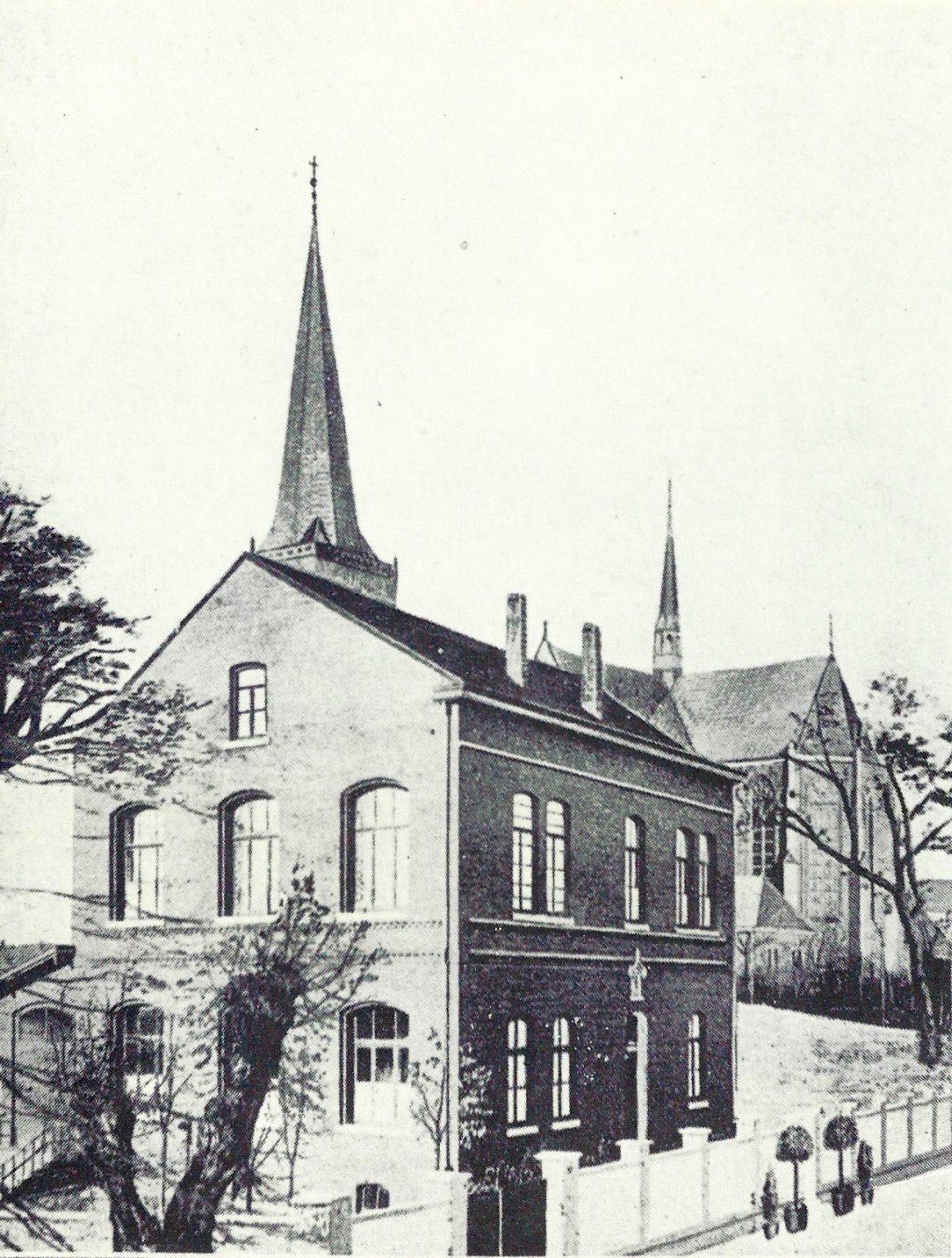
Monastery „Maria Hilf“ in Weiden. In „Handbook of the Archdiocese of Cöln“ from 1905 this monastery is already mentioned. At that time, 6 Franciscan women from Olpe were working in the monastery.
Page 90
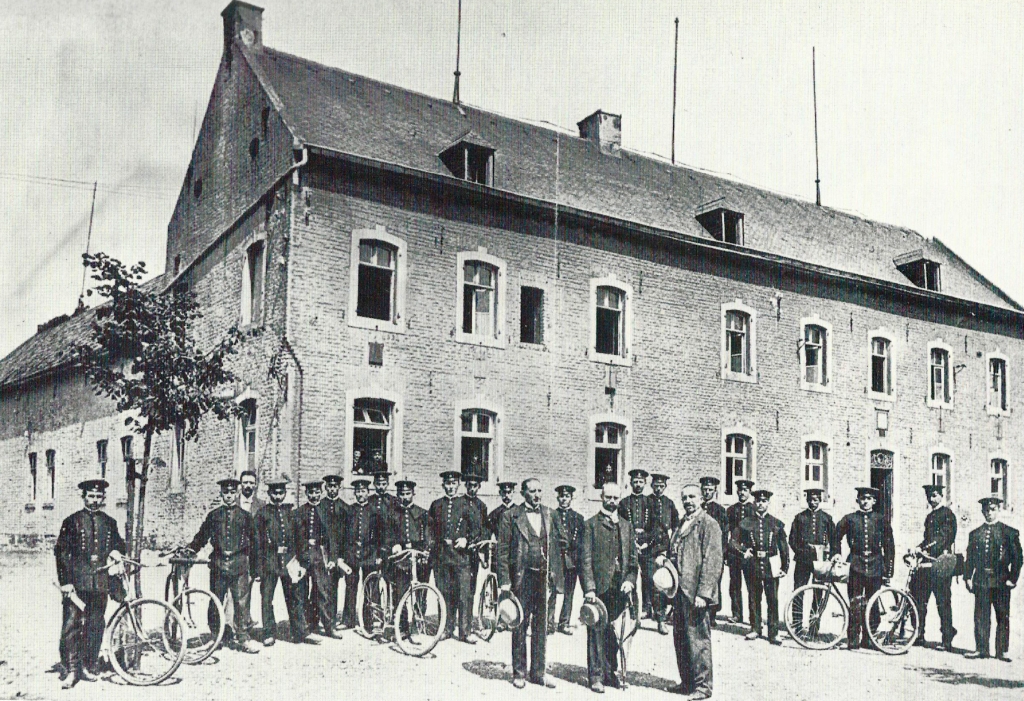
A school and a hospital were the building, which was roughly stands where the entrance to the Bardenberg Knappschaft Hospital is now located. Initially acquired in 1868 as the "Bauersches Anwesen" (Bauersches estate) for 5000 talers - it served the Wurm Knappschaft as a hospital, with first 28, later 40 beds.
The first “Bergschule” in the Wurm area has existed in Bardenberg since 1867. This school moved to the building, which was already used as a hospital, in 1871. The education at this school lasted three years.
Let's read what the newspaper wrote on May 8, 1901:
"Bardenberg, May 7. Last week, a new course began in the local “Bergschule”, in which the young people are trained as overman. During this time, they take turns working a day practically in the pit, while they have lessons here the following day. The course has 30 students belonging to the mines of the Eschweiler Mining Association, the Unification Society and the North Star colliery. Very nice is the fact that they still receive some of the wages on the days when they do not work on the colliery. "
The picture shows students of this “Bergschule” and in the front row on the right the Knappschaft Director Franz Rudolf Roß, teacher of mine accounting at the “Bergschule” and from 1888 to 1925 member of the Council of the Municipality of Bardenberg.
Page 92 - County hospital - Today Rhein-Maas - Kilinikum -
Map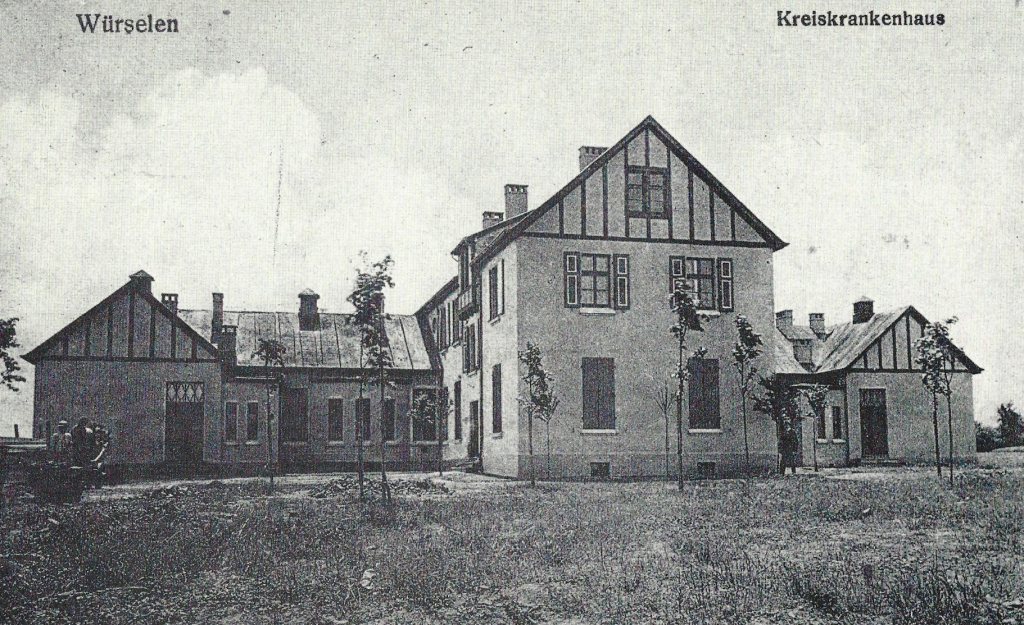
In 1919, County Council decided to build an insulation hospital in Würselen, Mauerfeldchen. When the building was completed in 1922, the infant and toddler home of the County was set up there. A "County Hospital," as the depicted postcard overhasty announced in the early 1920s, was not put into operation until 1967 only a stone's throw away, the Marienhöhe County Hospital in Mauerfeldchen.
The infant home served as an "County Vocational School for Agriculture" after the war, temporarily housed the County Photographic Service office and is currently the headquarters of the veterinary office.
Page 93 und 94 -
How long have there actually been schools?
Since when have there been schools in Würselen, since when compulsory schooling? When and where were the first schools in our city built? These and other questions point back to the 18th century.
The Aachen City School Council Peter Kremer knew to report in 1924 that even earlier, in the 17th century and until the 18th, "in the countryside" the teaching was mostly in the hands of people who taught young people as ancillary earnings.
Aachen Empire
For Würselen’s villages - what was decisive for all the villages of the Aachen Empire - will have been true: The ‘Scholaster’ had the right to supervise the schools. He was always a member of the Marian Foundation. As time went by, the Aachen Council had an increasing influence on the school system.
It remains questionable how many Würselen pupils, for example, took their hands on Aachen City School and Accounterage Master Johannes Schmidts's 1744 school fibula, titled "New Regulations A.B.C. Or ortographic alphabethum".
In Broich, a teacher named Franz Josef Scherberich is mentioned, who was also a custer. In the other villages in the Aachen Empire, it will also have been similar that secondary professionals or clergy gave the lessons, which were mostly limited to arithmetic, reading, writing and religion.
The Napoleonic Teaching Act
With the French Revolution and the resulting affiliation of the Rhineland to France, the situation changed, but not for the better.
School Councillor Kremer in his essay mentioned above:
"French school policy had more political goals, eliminated the spiritual and called for the secular school supervision, which, however, was hardly handled. According to the Napoleonic School of Education (1802), the establishment and maintenance of primary schools was the responsibility of the municipalities, which, however, were unable to comply with the compulsory schooling requirement due to the poor financial situation. "
Furthermore, there were difficulties - which also existed before - with the school rooms, with teachers, who were often inadequately trained because of their low social position, and by going to school irregularly.
Everyday school in the municipality of Broich
But even after the departure of the French and the new competence of Prussia for the Rhineland, there was no immediate improvement, as shown by an excerpt from the school chronicle of the Rev. Deboeur, written around 1816:
"In Euchen, Prof. Ackermann taught 6 students in a so-called high school. In Vorweiden there was an evangelical school under a teacher Lentzen, which was also visited several times by Catholic children. In addition, “Winkelschulen” (private schools) still existed, especially for the winter: In Often (today: Ofden), Euchen, Neusen and Linden. The teacher in Often guarded the dear cattle in spring, summer and autumn: In the winter he gathered around him the village youth, and the named pastor notices of him that he had been a jack of 15 years. It was probably thought that the young person could easily rule a number of children, because he knows how to even keep a whole herd of cattle.
The other Winkelschulen were held by so-called “Schultanten” or “Schulmöhnen”, one of whom obviously was Miss Janßen in Linden. School is held daily from 9 to 12 and from 2 to 5, in the harvest time a month vacancy. Actually, there is no schoolhouse here, but in the house of the verger, who was always a schoolmaster, there is a room about 20 feet long, 24 feet wide and 12 foot high, which is equipped with benches for the children, and is still in quite good shape. NB. The Mr. Pastor did not measure well, as the room was nearly half smaller, as you can easily still constituate. According to the old ‘Schlendrian’ is given lessons in the spelling, reading, writing, catechism. Disciplin is almost unknown; Genders are not segregated; The whole classification is that some got a lessonn in the ABC, others in the Gospel, others in the Testament, others finally had to write down some letters or words. "
School building in the 19th century
Only gradually the necessary schoolhouses were built in Bardenberg, Würselen and Broichweiden, and several times you can read in the chronicle that when classes or school buildings were completed, there was basically again a lack of space. In 1829, the school and community hall in Bardenberg was built, after the Weiden schoolhouse had already been completed in 1824. In Würselen, schools were built on the market (1823), in Grevenberg (1841) and on Neuhauser Strasse (1847). In St. Jobs they built a school in 1854, in Linden Neusen in 1856. Later, other school systems were created, such as the Higher Boys ' School from 1881. And from 1920, an Hilfsschule () was created, as a school for children with learning difficulties was previously called. Many school buildings from the last century are sought in vain in the cityscape of today. the Second World War has destroyed a lot.
Page 98
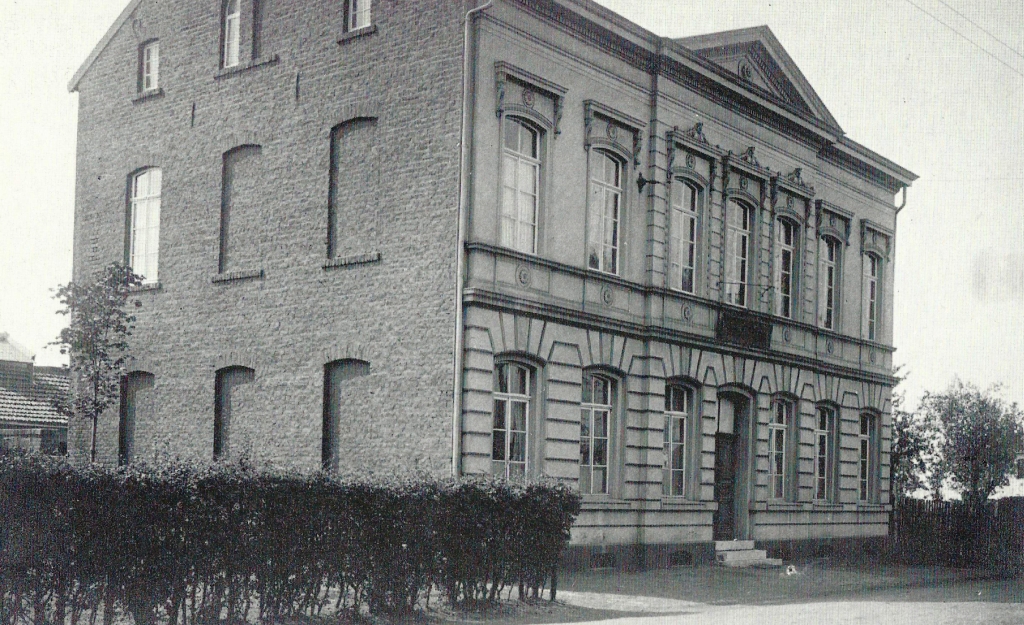
In May 1881, the Higher Boys ' School was opened on Morsbach Street, initially with 34 students. The administrative report of the district of Aachen from 1899 states: "From higher schools there is a progymnasium to Eschweiler, Higher Boys ' Schools to Stolberg, Herzogenrath and Grevenberg." In the early 1920s, the school was recognized by ministerial decree as a progymnasium (in development). The decernent of the Provincial School College then carried out a revision in 1924 and a final examination of the subsecunda, and so the final recognition took place on 28 4 April 1924. At the time, the school had 170 students, including 52 sextans.
The Progymnasium was repealed in 1928 because the city could no longer provide the necessary subsidies because of the bad economic situation.
Page 100 - Bild oben -
Map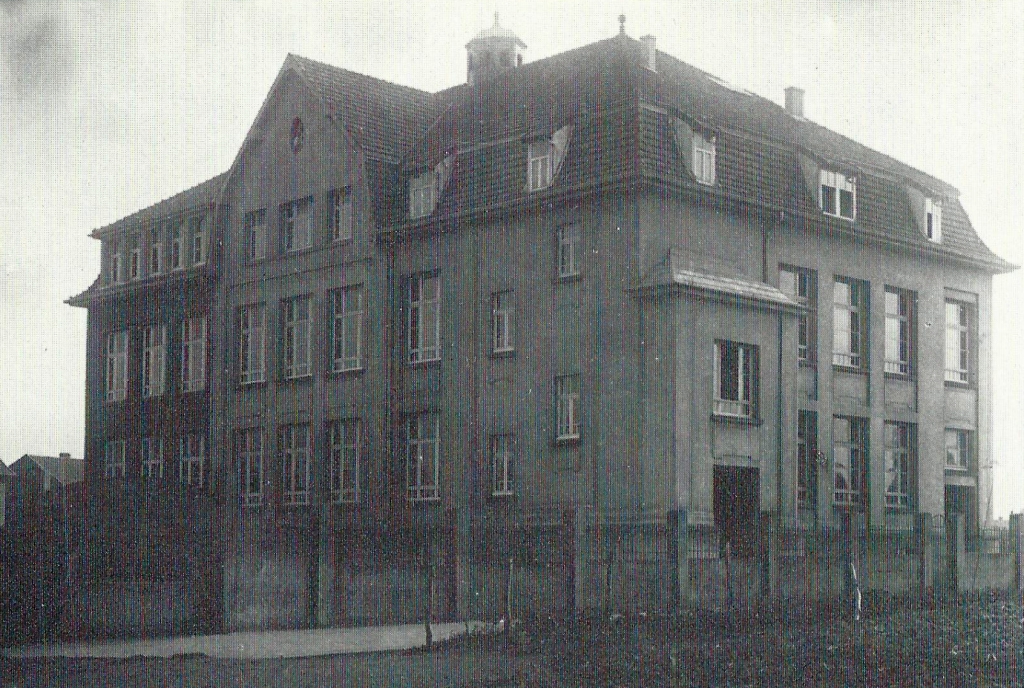
On 1 April 1912, Lehnstraße Primary School was moved into. Due to the war that broke out two years later, it was temporarily used as a hospital. Today it houses the community primary school ‘Würselen – Lehnstraße’ (photograph 1921).
Page 100 - Bild unten -
Map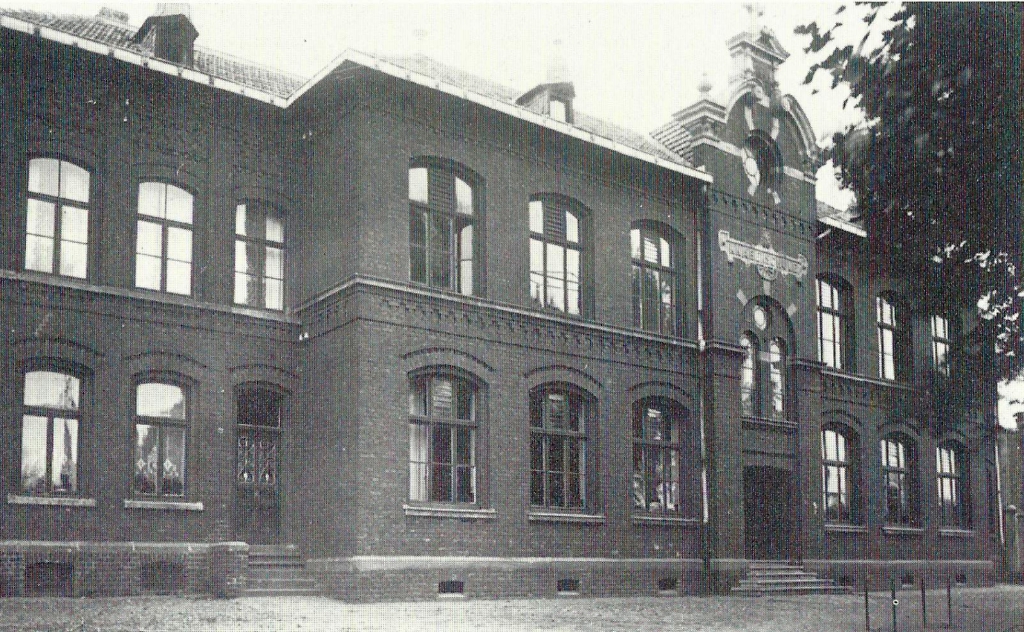
In 1890, the school was built on Friedrichstraße. Together with the schools Markt (1823) and Neuhauser Strasse (1847), three schools were available in the village of Würselen. The picture shows the school Friedrichstraße around 1920.
Page 103
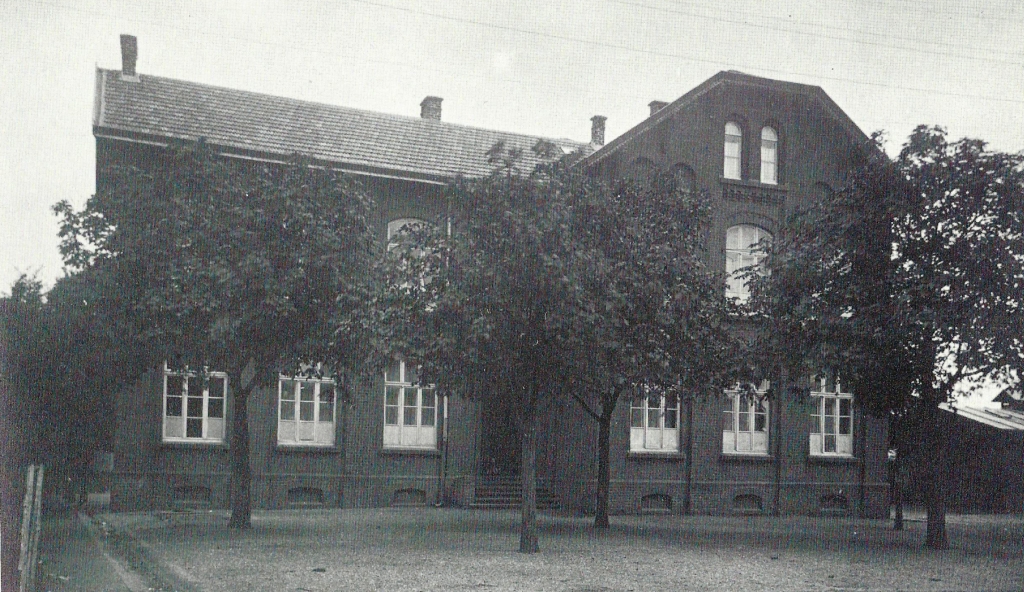
The building of the school Kreuzstraße around 1920. This school had been available since 1903 and was used until 1931. Destroyed in war, it is now missing from the cityscape.
Page 107
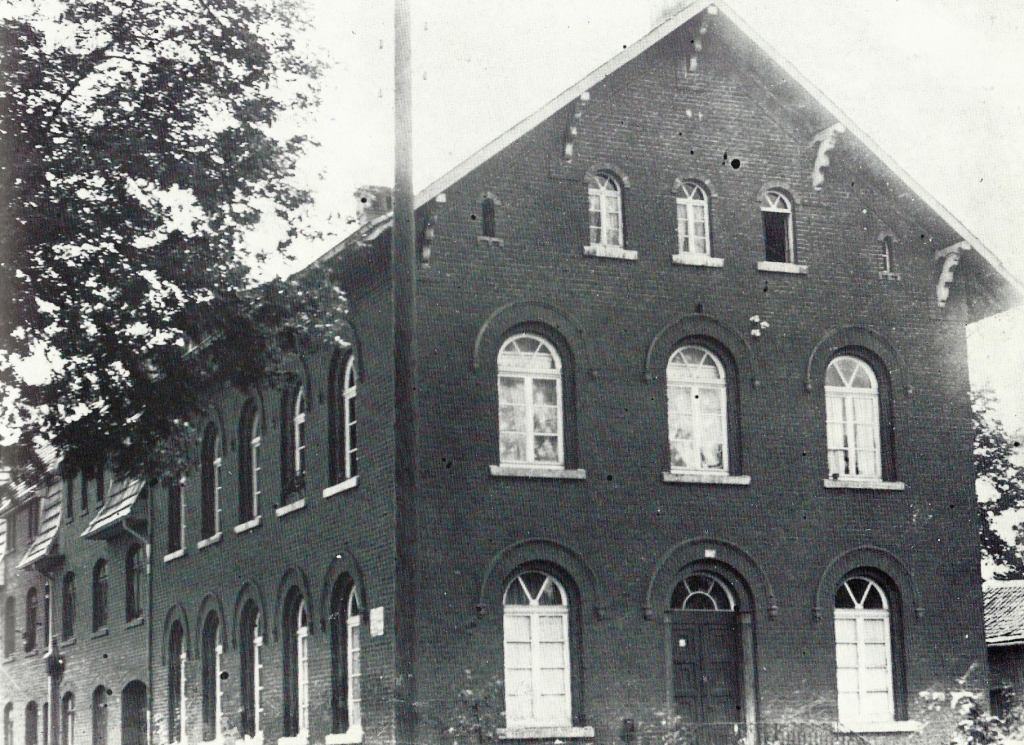
School St. Jobs; Construction of the school had begun in 1854, and the municipality of Broich also participated in the financing. „According to the children visiting the Weiden school from Vorweiden“, as the municipal chronicle states.

